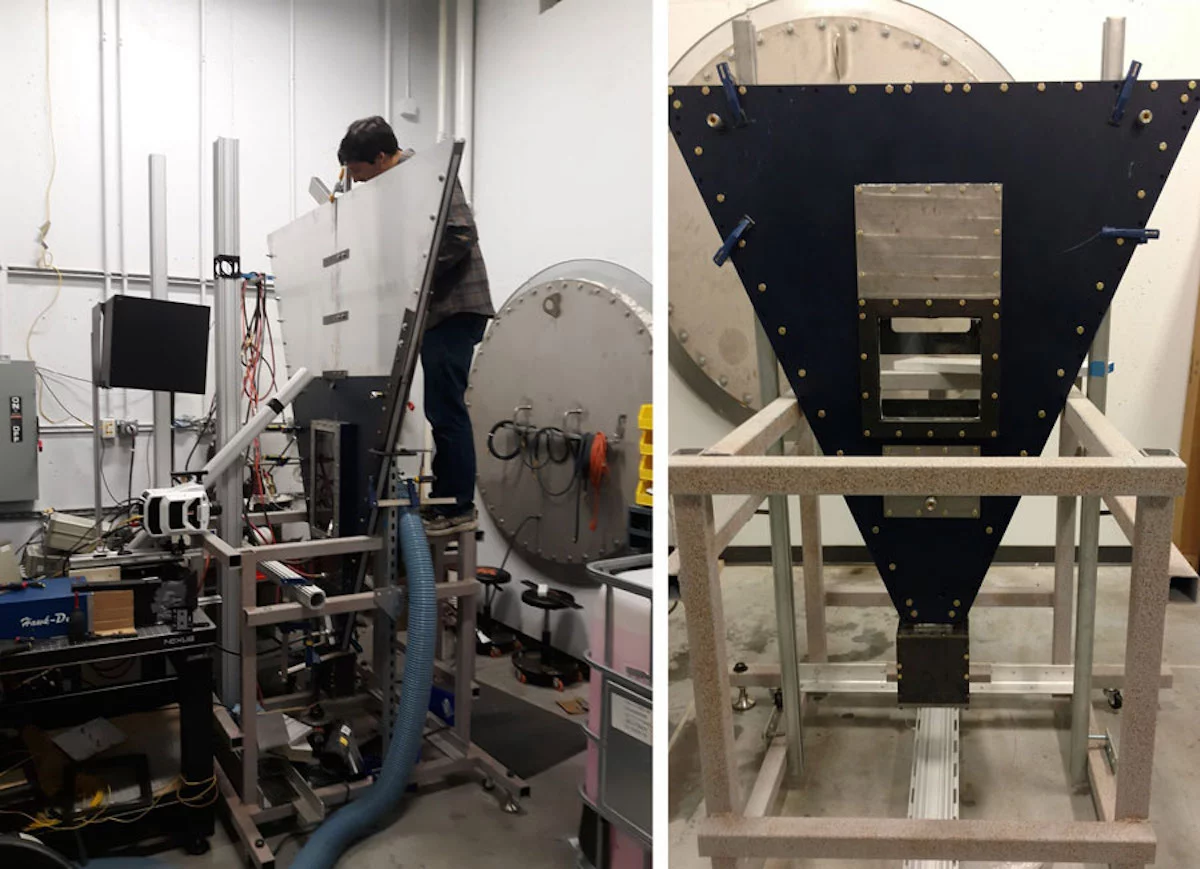Supernovae are some of the most energetic events in the universe, and the resulting nebulas are a favorite for stargazers. To better understand the physics behind them, researchers at Georgia Tech have created a “supernova machine” in the lab.
Stars are basically big volatile balls of gas, sustained for millions of years by a delicate balancing act. Intense gravity wants to pull the matter towards the center, but nuclear fusion in the core is pushing outwards at the same time. Eventually though, the core inevitably runs out of nuclear fuel, and gravity wins the battle.
The star then collapses inwards very quickly, and the resulting shock wave sends material flying outwards at extreme speeds. The event is a supernova, the swirling gas and matter is a nebula, and the dense object formed in the center is a neutron star or a black hole.
And now, researchers at Georgia Tech have recreated this process in the lab. Their “supernova machine” is designed to study the turbulence physics that produce some of the most stunning sights that space has to offer.

The contraption is shaped like a slice of pizza with the pointy end to the floor, standing 6 ft (1.8 m) tall and about 4 ft (1.2 m) wide across the top. A window in the center reveals a chamber containing gases of different densities – the heavier ones settle to the bottom, while lighter ones float on top. This mimics the different layers of gases inside a star.
To trigger the supernova itself, there’s a small box at the bottom of the machine, containing what’s known as Research Department Explosive (RDX) and pentaerythritol tetranitrate (PETN). This produces a miniature contained explosion that sends shock waves up through the pizza slice and through the gas, causing them to mix.
The gases are lit up by a laser light, allowing a high-speed camera to watch what happens down to the centimeter scale. And the swirling, twisting results are very supernova-esque. Pillars of heavy gases were forced upwards through the lighter layers, and then afterwards the drop in pressure behind the wave stretches both types of gases back down to mix more thoroughly.

“One of the most interesting things we saw related to a mystery about supernovas – they shoot high density gas called ejecta way out, which may help create new stars,” says Ben Musci, first author of the study. “We saw some of this gas propulsion in the device where heavy gas was propagated way out into the light gas.”
Of course, this kind of machine can only capture a microcosm of the real thing. The team took great care to account for background radiation, temperature, and Earth’s gravity in the results. Plus, the shape of the machine only recreates a two-dimensional slice of a supernova – normally of course, a supernova happens as an expanding three-dimensional ball.
Still, the team says that the supernova machine could help astronomers calculate the speeds of gases in nebulae, and more accurately determine how long ago they were born. It could even be put to work in reverse, the researchers say, to aid in the development of nuclear fusion reactors.
The research was published in the Astrophysical Journal Letters. The supernova machine can be seen in action in the video below.
Source: Georgia Tech





